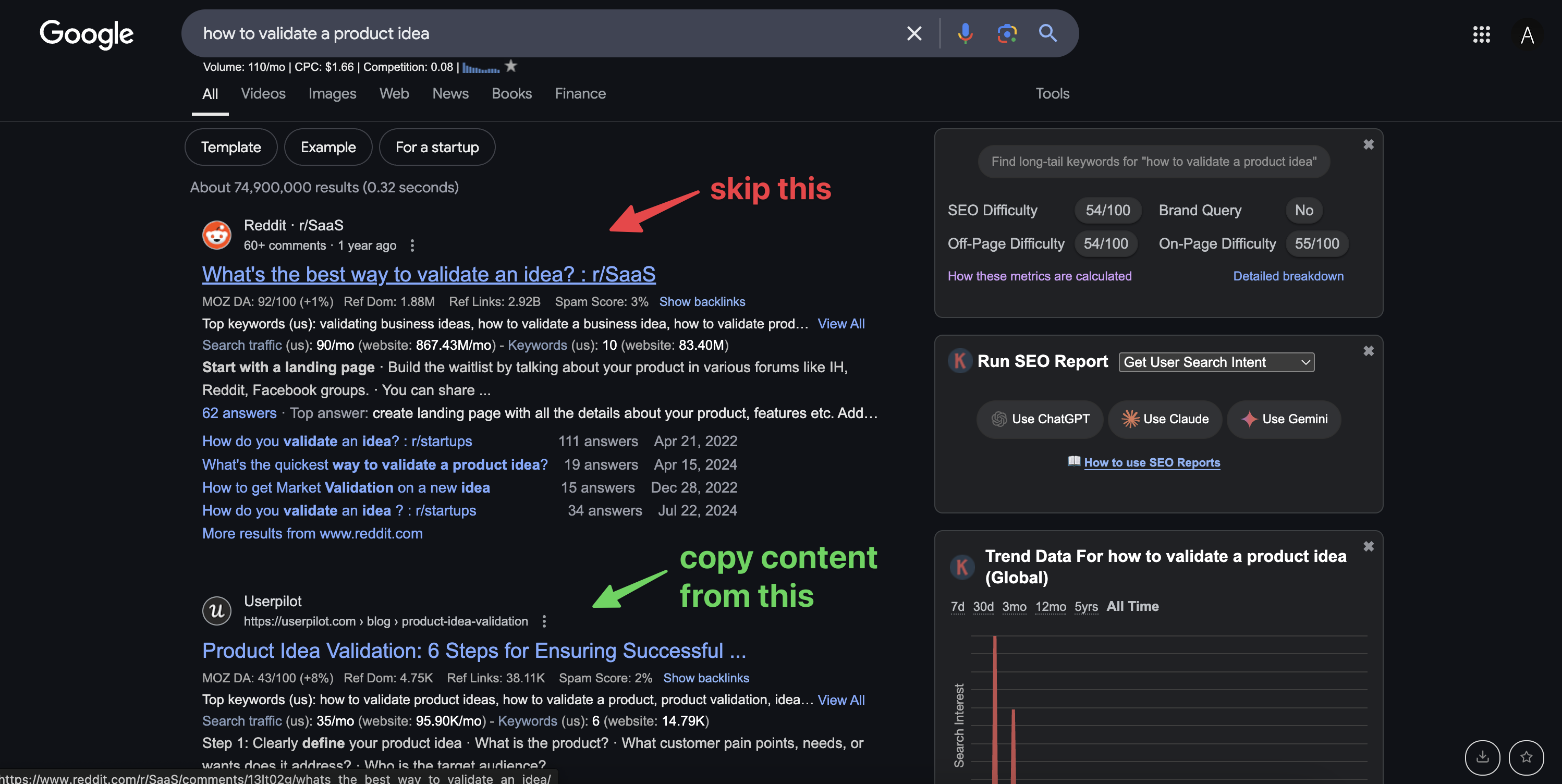Ondrej
How to rank on page 1 with AI written blog posts
Everything you need to know from picking the right keywords to the AI prompts used
Why should you listen to me?
There's many ways to rank on page 1 in Google.
But I've never seen something so easy like this before.
I implemented this strategy for my product and ranked for this keyword in less than 48 hours:

1. Find the right keyword
First we need to find a good keyword.
A good keyword has:
- decent search volume (50-150)
- low competition
I created a free GPT you can use to find the right keywords: SEO Keyword Research Expert
Just go to your site and copy the content over to the GPT:
It'll give you a list of keywords for your niche.
Go through them and see if the difficulty and search volume is viable: Keyword Generator Tool, this tool also generates other keywords that might be relevant so keep an eye out for them.
Incase it didn't give you anything feasible then reply with "try again but use broader 2 word terms"
Spend like 10 minutes max on this step.
2. See what's already working
Go to Google, search the keyword and see what's already working.
Copy the content of the page and save it to a text file.
Make sure that you pick the one that is actually a blog post and not a Reddit post or some similar forum.

You can copy the content the same way you did on your landing page.
3. Create blog post outline
We'll first write the outline because this splits the work between more steps and makes the result better.
There's 3 different models I tried out:
- Qwen2.5-Max - Free
- DeepSeek V3 - Free
- Claude 3.5 Sonnet - Paid
You can pick any of them, I'm going to use Qwen2.5-Max, it's a new AI model that is completely free and great for writing blog posts.
You can use it by going to: QwenLM.ai
Use this prompt and replace the placeholder with your keyword:
Write a detailed blog post outline based on the examples for the keyword: [KEYWORD]
Attach the text file you created earlier and run it.

4. Create the full blog post
Stay in the same chat window and paste in this prompt:
<guidelines>
All of these guidelines have absolute priority and must be followed at all times.
Do not use complex or abstract terms such as 'meticulous,' 'navigating,' 'complexities,' 'realm,' 'bespoke,' 'tailored,' 'towards,' 'underpins,' 'ever-changing,' 'ever-evolving,' 'the world of,' 'not only,' 'seeking more than just,' 'designed to enhance,' 'it's not merely,' 'our suite,' 'it is advisable,' 'daunting,' 'in the heart of,' 'when it comes to,' 'in the realm of,' 'amongst,' 'unlock the secrets,' 'unveil the secrets,' 'transforms' and 'robust.' This approach aims to streamline content production for enhanced NLP algorithm comprehension, ensuring the output is direct, accessible, and easily interpretable.
Go into extreme detail and make it as long as possible.
AI markers ruin the text for the reader.
The structure for each section should very different to the others.
Avoid these AI markers:
- Perfect Parallel Structures
- Overly Precise Number Ranges
- Overly Precise Percentages
- Formulaic Transitions
- Template-Style Comparisons
</guidelines>
Now write an extremely detailed blog post based on the outline, length is 2500 words, use rich markdown, comply with all of the guidelines and fully avoid all AI markers.
This should result in a 2000ish word blog post.
You can take this and it'll probably rank page one in Google. (if you picked the right keyword)
5. Improving it even further
The content is pretty good already but there's some improvements that make it even better.
That includes:
- Generating 3 relevant images with Flux
- Embedding relevant youtube video to keep visitors on your page longer
- Manually improving h1 for better click through rate
This makes our blog post more pleasant to the human eye because we add other content besides just text.
Conclusion
Like you've seen, ranking on page 1 purely with AI content is possible.
And it was never this easy.
I hope you found this useful.
Thanks for reading.
